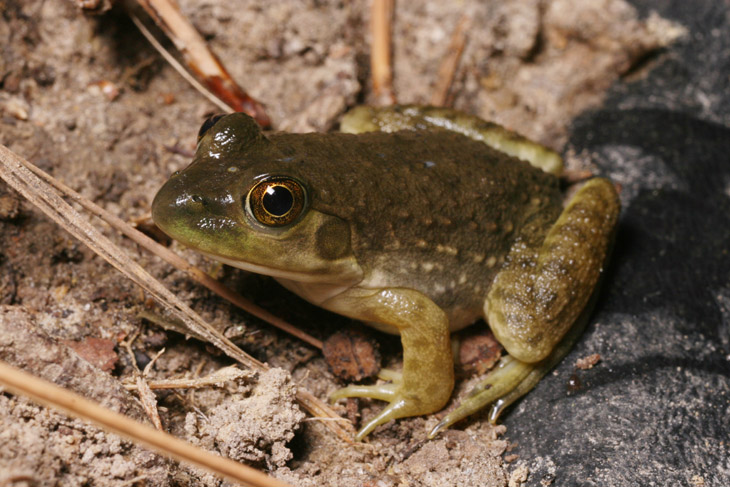
After making the previous post, I went out to water the plants (yes, at 2 am, don’t judge me, I’m not judging you) and was able to creep up on the frog in the pond with the use of the headlamp. The bright light doesn’t register as a danger to them, so even though this one was the wariest I’ve seen in a while, I could do a nice portrait – despite scuffing my foot on the first attempt and sending it hurtling into the water (the frog, not my foot, which remains resolutely attached.)
The problem is, I still don’t know what species this is. In size and body shape it appears to be a green frog (Lithobates clamitans,) but with the lack of a ridge extending back from the eye along the body, called a dorsolateral ridge, it would seem more like a bullfrog (Lithobates catesbeianus) – both of these are common here, and found at the proper pond nearby that serves as the foreground to lightning pics. It’s a small specimen, about 4 cm in body length, so it’s most likely a juvenile, and no source that I’ve found has told me whether the ridge develops later in life.
You might think a nature photographer should know all of this automatically or something, and perhaps this is true for some definition of “should.” But here’s how it works for me: I have shot several hundred different species, from mammals to arthropods to flowers, and the distinctions of many are known mostly to specialists within a given field, such as herpetologists in this case – NC has at least 30 species of frogs and toads alone, probably more counting subspecies. What happens fairly frequently is that I shoot something and find out later what it was – or, also frequently, that I did not capture the necessary detail that would distinguish one species from another, such as belly coloration or the stripe along a leg. But considering how many species I can recognize on sight now, across multiple Kingdoms and Phyla, this method hasn’t been too shabby from an amateur naturalism standpoint.



















































